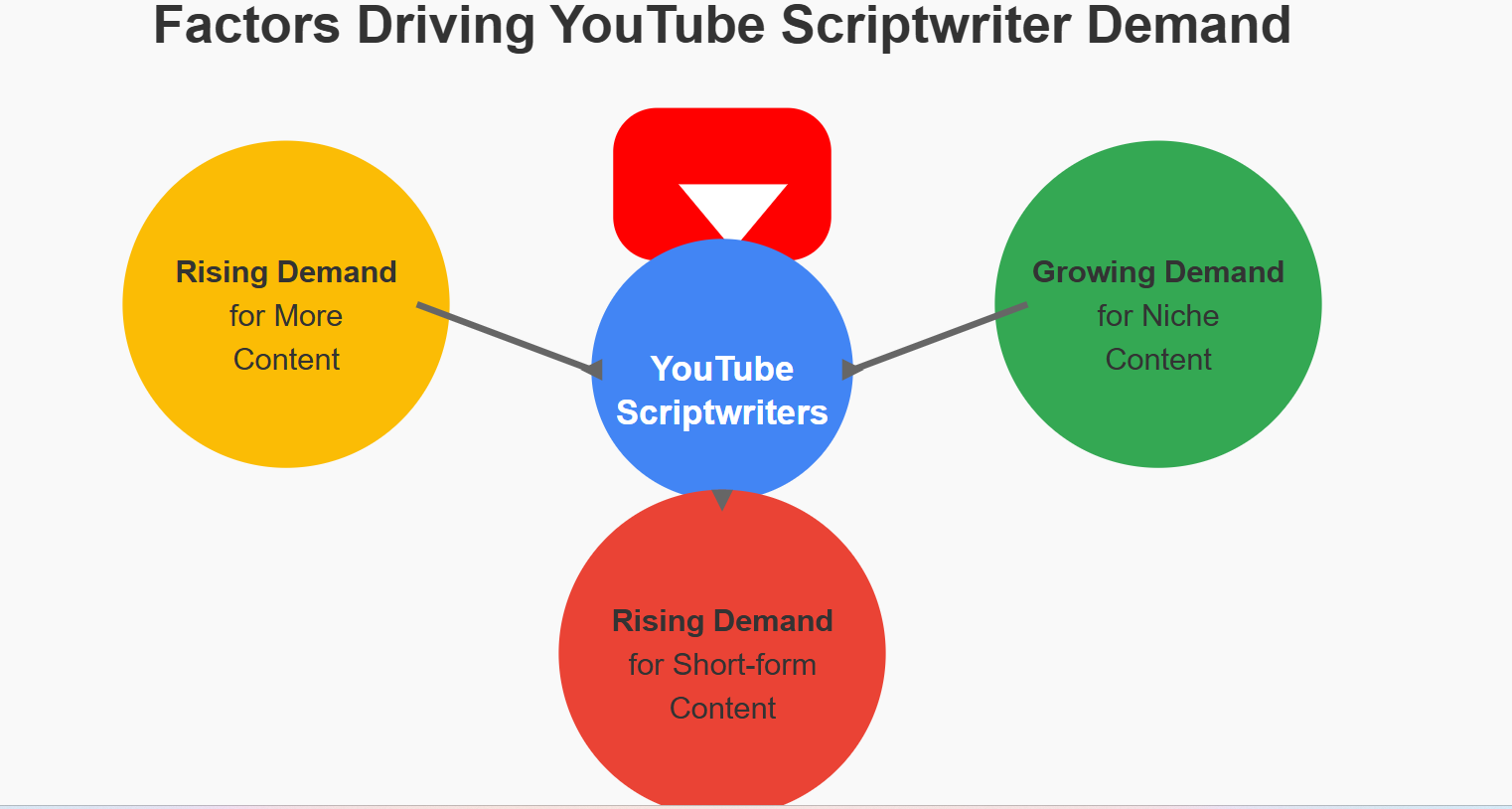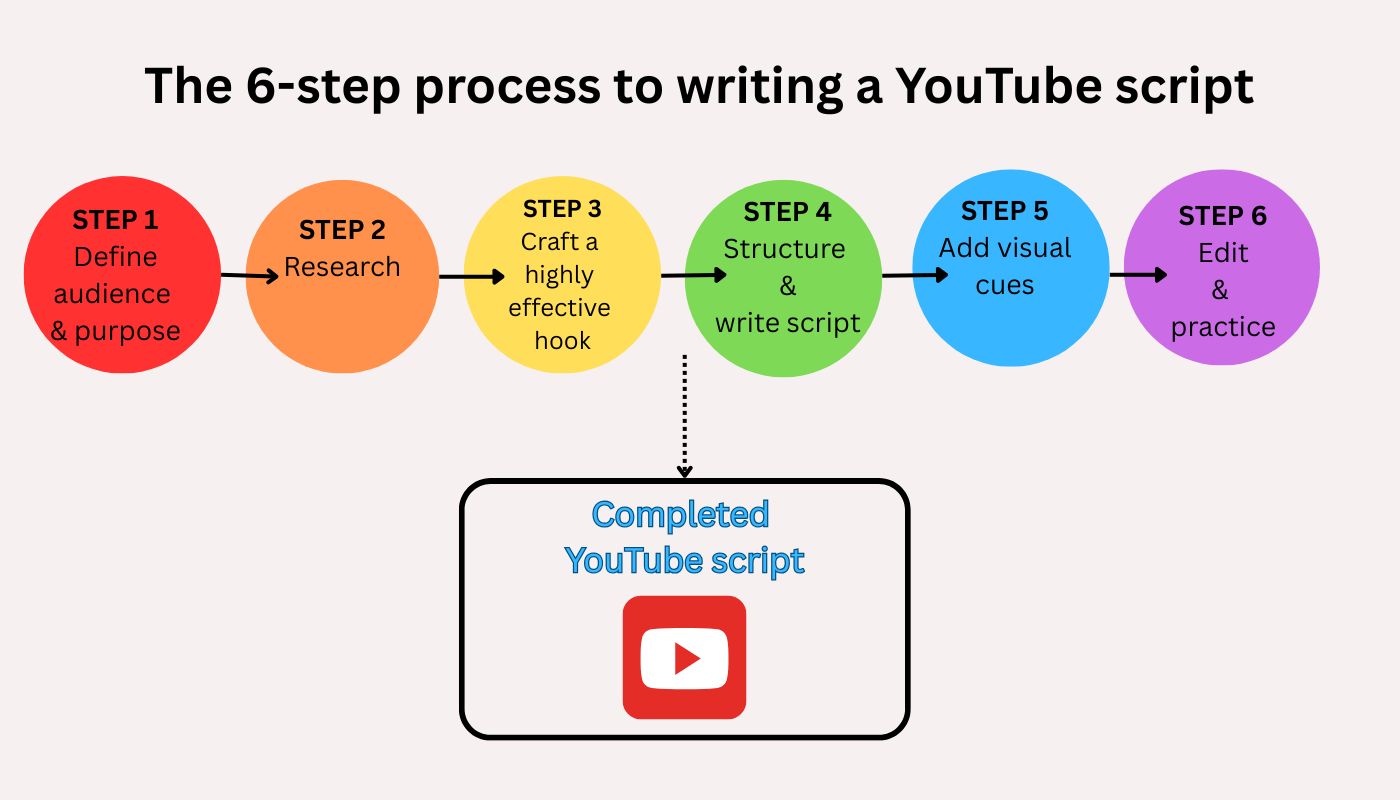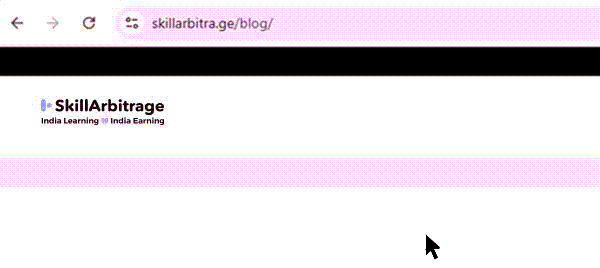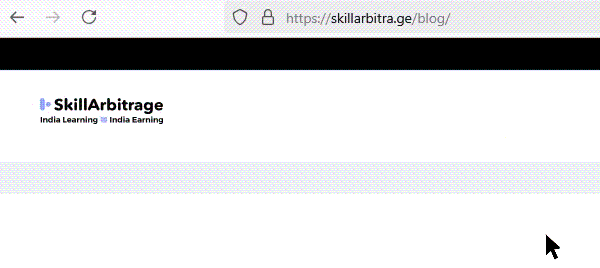This blog provides a detailed step-by-step guide on how to write scripts for YouTube videos. The demand for experienced scriptwriters in this field is enormous, and this blog can be especially useful for content writers looking to build a lucrative career in YouTube scriptwriting.
Table of Contents
Introduction
I was concentrating hard on the view outside the window. Not because the view was particularly interesting but because I could already predict how my conversation over call with a client would go.
He was a traditional businessman, a manufacturer of water tanks or domestic reservoirs. I had previously done some freelance gigs for him, an odd brochure here, some website content there. He was the sort of client that contributes to a freelance content writer’s monthly bread, butter, and egg. He gave me small projects regularly and paid on time. I liked working for him. But there was just one thing.
He was ridiculously old-fashioned in the matter of marketing. His website was up later than any of his competitors, he started running digital ads later than anyone else, but he was exasperatingly difficult about any new idea. When he called me to give me work and yet lament how this was unnecessary, I generally concentrated on other things like kittens playing, or as in this case, the unremarkable view outside the window.
His lament today consisted of how unnecessary YouTube videos were. He had opened a Cafe recently, and many of his friends and business associates talked about his nonexistent YouTube presence.
He said, as he was prone to do. “ But, madam, this was so unnecessary. All faltu, only ways to waste hard earned money.”
For the holy grail of marketing, I really had to say something at that point.
I told him, “It is anything but unnecessary, Mr. Shetty. Almost 500 hours of video are uploaded on YouTube every minute, and India has over 467 million active YouTube users.”
I was glad to see I had shocked him into silence. He said shakily. “467 million in India alone?” I said, “Yes, that many. And whatever you are selling, TMT bars, paints, coffee, can you really ignore those many people If you wanted to make any business run?”
I had some previous experience writing scripts for YouTube videos. Not only were they fun to write, but such work was increasingly making up for a lot of freelance work that came our way.
Most of the videos on YouTube require a scriptwriter. Whether it’s a tech tutorial for Mumbai students or a travel vlog for American adventurers, everyone requires a well-written script. And, Indian scriptwriters are in high demand, mainly because of their budget-sensitive pricing and an innate knack for storytelling.
For Indian writers, scripting is the edge that cuts through the noise, whether you are targeting India’s mobile-first audience or international viewers on desktops.
Storytelling is the superpower that drives engagements and watchtimes. India’s narrative tradition—think Bollywood or Mahabharata—pairs with global trends like emotional hooks as in MrBeast’s “I Gave Away” or CarryMinati’s “YouTube vs TikTok” boasting almost 200M+ views, using scripted humor to go viral.
On the other hand, Marques Brownlee (MKBHD) scripts tech reviews with universal clarity, hitting 18M subscribers globally.
Scripts bring structure to creativity.
Mr. Shetty cleared his throat on the other side of the phone, he clearly had more to say, “ But Madam, why??? Why are there so many YouTube videos uploaded every day?
It was time to give some more data. I decided to go all out. “ You see, Mr. Shetty, in India, viewers spend an amazing amount of time on YouTube, an average of 29 hours and 37 minutes per month.
These viewers are constantly craving concise, engaging videos, and brands are trying to oblige. A YouTube presence is not only necessary to improve brand visibility and top-of-the-mind-recall but is also great for creating a loyal consumer base. People generally liked the brands if they liked the content they uploaded.”
The lengths of these videos varied. They were typically 8-12 minutes long in India. Internationally, preferences vary—U.S. audiences lean toward videos of 10-15 minutes duration.
Mr Shetty intervened in my musings again, “ Clearly, you content writers are making a killing! Haw haw.”
“Not too bad,” I added politely.
It was true that scriptwriters for YouTube were in great demand. But there were solid reasons why this was the scenario.
The rising demand for YouTube scriptwriters: decoded
Mainly three major interconnected factors are driving the growing demand for YouTube scriptwriters.

Let me explain them to you a little more elaborately.
The constantly rising demand for more and more content
YouTube is a dominant platform with billions of active users and an ever-growing appetite for fresh, engaging videos. Content creators, from individual influencers to large-scale “faceless” automation channels, are under constant pressure to produce high-quality videos at a rapid pace—often one to two videos per week—to maintain audience interest and keep the algorithm working for them.
Writing compelling scripts that hook viewers, sustain retention, and align with trending topics is time-intensive, leading many creators and businesses to outsource this task to skilled writers.
The growing demand for niche content
These days, more and more creators are targeting specific audiences—like tech enthusiasts, cafe hoppers, home cooks looking for exotic recipes, history buffs, or lifestyle seekers—with tailored, well-researched scripts that require expertise and creativity to stand out in a crowded market.
Meanwhile, the monetization potential of YouTube, through ads, sponsorships, and viewer engagement, incentivizes creators to invest in professional scripting to maximize returns.
Demand for short-form content
Another factor that adds to this is the shift toward short-form content, e.g., YouTube Shorts. Automation channels, which rely on pre-prepared scripts paired with voiceovers and visuals, further amplify this need as they churn out content in bulk to capitalize on trends.
I was thinking about this when Mr. Shetty finally made a decision. The task to write 5 short YouTube videos for his newly opened Cafe, “ Espresso Express,” came my way.
I follow a simple but detailed 6-step process to write scripts for YouTube videos.
The 6-step process to writing a YouTube script
Follow these steps to start writing YouTube scripts that can break the internet, like I did with the cafe, Espresso Express.
Step 1: Define your audience and purpose
The easiest way to do this is to ask your client who their preferred Target Audience is. Generally, when someone starts a business, they have a specific set of audience in mind and specific results as well.
Mr. Shetty specifically wanted “ urban, trendy, young people, who are always on Insta”, or that’s how he put it,
Most cafes look at this TG ( Target Group) unless they have a specific niche, like they allow pets or have plenty of books that the customer can read while eating. In these cases those attributes like “likes animals”, “ has pets,” or “ reader” will figure in understanding the audience.
So for Espresso Express, the Italian-themed Indian cafe, this was what the understanding looked like when put on paper.
- Audience: Young, hipster, urban office goers (likely aged 20-35, trendy, social media-savvy, working in Tier I cities like Bangalore, Mumbai, or Delhi). They value aesthetics, unique experiences, and quick, quality food or coffee to fit their busy lifestyles.
The last part, like aesthetics, quality food, etc., can be deduced by looking at promotions of other Cafes and studying their TG; this is also called proxy research.
- Purpose: To introduce Espresso Express as a cool, must-visit spot that blends Italian café vibes with an Indian twist, appealing to their taste for something fresh and Instagrammable while offering a break from their hectic workdays.
Step 2: Research
- Gather info about Espresso Express:
- Location: A bustling urban area in India (e.g., Koramangala, Bangalore).
- Menu: Italian classics like espresso, cappuccino, tiramisu, and paninis, with Indian-inspired twists (e.g., masala chai latte or a spicy paneer focaccia).
- Vibe: Minimalist décor with neon signs, exposed brick, and cozy corners—perfect for selfies.
- Unique Selling Point (USP): Authentic Italian coffee meets Indian flavors in a trendy, urban setting.
- Understand the audience: They love coffee culture, value aesthetics, and seek quick yet memorable experiences during lunch breaks or after work.
- Quick competitor check: How does Espresso Express stand out from Starbucks or local chai stalls? Turned out it had winning advantages because it was not as pricey as Starbucks but infinitely more comfortable and with a better selection of food and aesthetics than the local chai stall.
Step 3: Craft a highly effective hook
- The hook is the first 10-30 seconds—crucial to grab attention. For hipsters, make it bold, relatable, or curiosity-piquing. Other ways of writing a good hook are with some surprising data or statistics or by breaking a myth.
- Hook Idea: “Tired of the same old coffee runs? What if I told you there’s an Italian café in India that’s about to become your new obsession?”
Why it works: It taps into their boredom with routine and addresses a pain point. i.e., visiting the same cafe, teases something fresh, and promises an “obsession” (a trendy, shareable spot).
Step 4: Structure and write your script
- Break it into sections: Hook, Intro, Main Content, Call-to-Action (CTA). Any video generally has these four sections.
The hook holds the interest of the audience, the intro specifies the audience ( who we are talking to in the video), the main content part holds the main points we are trying to communicate, and the CTA clearly tells the audience what they need to do after watching this video.
- Keep it concise (aim for 2-5 minutes, around 250-600 words) and conversational.
Sample Script (Rough Draft):
- Hook: “Tired of the same old coffee runs? What if I told you there’s an Italian café in India that’s about to become your new obsession?”
- Intro: “Hey, coffee enthusiasts! Welcome back. Today, I’m spilling the beans on Espresso Express—a hidden gem where Italian coffee meets Indian vibes, perfect for us young, restless office-goers.”
- Main Content:
- Point 1: “First up, the coffee. Think smooth Italian espresso, but with a twist—like their masala chai cappuccino that’s basically a hug in a cup.”
- Point 2: “The food? Paninis and tiramisu, sure, but also a spicy paneer tikka focaccia that screams India. It’s quick, so you’re back at your desk before your boss notices.”
- Point 3: “And the vibe? Neon signs, cozy nooks, and a playlist that’s pure fire. It’s the kind of place you’ll wanna snap for the ‘gram.”
- CTA: “So, next coffee break, ditch the usual and hit up Espresso Express. Drop a comment if you’ve been—or if you’re planning to. Look in the video description for the exact location!”
Step 5: Add visual cues
- Pair the script with visuals to keep hipsters engaged. Videos are audio-visual mediums.
- Hook: Show a quick montage—someone sipping coffee, a neon “Espresso Express” sign, a bustling city street.
- Intro: Cut to you (the host) outside the café, holding a coffee cup, smiling at the camera.
- Main Content:
- Point 1: Close-up of espresso being poured, then a shot of the masala chai cappuccino with steam rising.
- Point 2: Pan over a plate of paneer tikka focaccia and tiramisu, then a quick clip of a pair of hands grabbing it to go.
- Point 3: Wide shot of the café interior—brick walls, neon lights—then a hipster snapping a pic with their phone.
- CTA: Someone sipping coffee, pointing at the camera, with text overlay: “Visit Espresso Express!” or close up of the sign outside with the name.
Note that each visual corresponds with definite parts in the audio part of the script.
Step 6: Edit and practice
Read it aloud. Trim fluff (e.g., cut “basically” or overly long descriptions). Ensure it flows naturally—like you’re chatting with a friend. The final word count should fit your target length (e.g., 300 words for ~2.5 minutes at 120 words/minute).
While this script is basic, it creates a definite mood, talks directly to the urban youth we identified as TG, and talks about the cafe and its selling points ( the decor, the food, the coffee) I
A bad script, on the other hand, could look like this:
Come to Espresso Express. A place for good coffee, great gupshup. We have [insert names of items and prices]. What are you waiting for? Visit us today.
Why is this a bad script?
It commits the cardinal sin of being boring, and there is no hook, no addressing of pain points, no structure, no brand building, and no audience identification.
Even after all this, if someone wants to visit the place, they don’t know the location, so incomplete CTA. There are also no visual pairings.
Why would you make a video and not send out a printed leaflet or flyer if this is what you want to do?
Follow the structure of Hook, Intro, Main Body, and CTA to write a complete YouTube script.
So, what were the six steps we followed to write the script? Take a look at this snapshot for more clarity.

Mr. Shetty was all praises about the Espresso Express work. Obviously, I did not tell him how to do it, but well, appreciation is nice!
And the cherry on top of this particular dessert was that he who was convinced that YouTube videos were a waste of time and money came around to see their benefits.
But what about the other sectors? Will the same structure work for them? Yes, and I found some templates that work for the booming sectors that regularly need YouTube videos.
2 super cool YouTube script templates
Template 1: Educational video script for Indian audience
Title: “5 Hacks to Crack JEE in 3 Months”
Intro (60 sec): “Arre, JEE aspirants! Padhai ka pressure feel ho raha hai? I’m [Name], and today, I’ve got 5 hacks to crack JEE in just 3 months. Stick around—your IIT dream starts here!”
Body (8 min):
- “Hack 1: Pomodoro Technique—25 minutes padho, 5-minute break. [Show timer ticking.]”
- “Hack 2: NCERT first—80% of questions come from it (CBSE Report, 2023). [Flip book pages.]”
- “Hack 3: Solve 10 past papers—I scored 20% more after this! [Show solved paper.]”
- “Hack 4: Group study—my friends and I cracked physics together. [Clip of group.]”
- “Hack 5: Sleep 7 hours—brain needs rest, yaar! [Sleep graphic.]”
CTA (30 sec): “That’s it—5 hacks to ace JEE! Which one’s your favorite? Comment below, like if this helped, and subscribe for more exam tips!”
Template 2: Lifestyle video script for international audience
Title: “5 Morning Habits for a Better Day”
Intro (60 sec): “Hey, everyone! Ever woken up feeling like the day’s already a mess? I’m [Name], and I’ve got 5 morning habits to turn that around—works anywhere in the world. Let’s dive in!”
Body (10 min):
- “Habit 1: Drink water—hydrates you instantly. [Sip glass.]”
- “Habit 2: Stretch—5 minutes wakes your body. [Show stretch.]”
- “Habit 3: Plan your day—takes 2 minutes, saves hours. [Write list.]”
- “Habit 4: No phone for 30 minutes—focus up 25% (Forbes, 2023). [Phone off.]”
- “Habit 5: Breakfast—fuel for success. [Plate shot.]”
Outro (30 sec): “There you go—5 habits for a killer morning! Try one and tell me how it goes in the comments. Hit subscribe for more life hacks!”
Most scriptwriters use AI at different phases of scriptwriting, another secret that I will share with you and did not share with Mr. Shetty.
What are they and how much do they cost?
Well, most of them are free, but even the free versions can be super helpful.
What are the AI tools that can aid you in writing these scripts?
There are several free AI tools you can use to write scripts for YouTube videos. Take a look at this list:
ChatGPT (Free Tier)
- What it does: Developed by OpenAI, ChatGPT can generate YouTube scripts quickly. You provide a prompt—like “Write a 5-minute script for a tech review video”—and it delivers a draft with an intro, main points, and outro.
- Why it’s useful: It’s versatile, supports multiple languages, and lets you tweak the tone (e.g., casual, informative).
Restream AI YouTube Script Generator
- What it does: This tool creates tailored YouTube scripts based on your topic, target audience, and desired tone (e.g., fun, authoritative).
- Why it’s useful: It’s simple, browser-based, and requires no account or downloads. You can customize the output fully.
TinyWow AI YouTube Script Generator
- What it does: Enter a topic, choose a tone and length, and get a script in minutes. It also allows rewriting specific sections if needed.
- Why it’s useful: It’s straightforward and offers flexibility for quick adjustments.
- Free access: Free to use with no sign-up or limits, though it’s ad-supported (ads can be removed with a paid tier).
VEED.IO AI Video Script Generator
- What it does: It generates detailed scripts, including scene descriptions, dialogue, and narration, based on a prompt, style, and format (e.g., YouTube video).
- Why it’s useful: It’s great for creators who want a script ready to film, and it integrates with VEED’s video editor for seamless production.
- Free access: Free with no limits on script generation, all from your browser without software installation.
GravityWrite AI Script Writer
- What it does: Produces YouTube scripts with natural language processing for human-like phrasing. It also suggests transitions and voiceover ideas.
- Why it’s useful: It’s beginner-friendly and focuses on engagement, making scripts flow naturally.
- Free access: Offers a free tier (up to 2,500 words/month), which is enough for a few scripts, with no credit card required.
Toolbaz AI Script Generator
- What it does: It creates scripts for YouTube videos and other media by analyzing successful structures and tailoring them to your input.
- Why it’s useful: It’s fast, free, and helps overcome writer’s block with structured outputs.
- Free access: Unlimited use with no login, though you need to provide detailed prompts for best results.
Scrip AI
- What it does: It specializes in short-form content like YouTube Shorts but can also handle longer scripts. It offers hooks, intros, and full outlines.
- Why it’s useful: It’s optimized for viral potential and quick-turnaround content.
- Free access: 100% free with no login or limits, ideal for testing ideas.
Tips for using these tools
- Prompts Matter: The better your input (e.g., “Write a funny 3-minute script about beginner gardening mistakes”), the better the output. Be specific about length, tone, and audience.
- Customization: Most of these tools let you edit the script after generation—use this to add your personal style or fix any errors.
- Combine Tools: Pair a script generator (like ChatGPT) with a hook generator (like Scrip AI) for a polished result.
If you too want to start writing scripts for YouTube videos, remember the steps and the structure and also remember some things you should never do!
Things to keep in mind
Never overload a script with information: Too many points confuse—stick to 3-5 at max.
Take measures to avoid tone mismatch: Hindi slang flops with U.S. clients; stiff English bores India. Make sure that your tone aligns with the audience and the channel or the creator.
Avoid weak CTA: Don’t use CTAs that spark no action, like “Thanks for watching”. Push action-packed CTAs like “Subscribe now!” and lift engagements.
Avoid writing long, rambling, complicated scripts: Unscripted rambles tank as do long, meandering scripts.
Conclusion
Indian content writers have a goldmine of opportunity on YouTube—local or global, your script is your weapon. Even clients like Mr. Shetty are coming around and benefitting from YouTube.
Start small—use the templates, tweak for your niche, and test. A 5-minute “Desi Budget Hacks” or “Global Travel Tips” could be your breakthrough. Learn from Ashish’s hooks, Emma’s flow, or MrBeast’s stakes. Your voice, rooted in India’s diversity, can captivate the world.
So, go for it —your super lucrative YouTube career awaits!
FAQs
How do I write a YouTube script that doesn’t sound robotic or scripted?
→ Many creators struggle with making their script feel natural. The key is to write like you talk—use contractions, short sentences, and a conversational tone. Also, reading your script aloud before recording helps refine awkward phrasing.
How can I make my script engaging in the first 15 seconds to reduce viewer drop-off?
→ The first few seconds are crucial. Use the HHH formula (Hook, Hint, Hype):
- Hook: Ask a compelling question or make a bold statement. (“Did you know 90% of people fail at this?”)
- Hint: Give a preview of what’s coming. (“Today, I’ll show you a hack that top YouTubers use.”)
- Hype: Build excitement. (“Stay till the end because I’ll reveal a secret trick.”)
How do I format my script so that it’s easy to read while recording?
→ Use short, spaced-out sentences with clear pauses. If reading from a teleprompter, format your script in line breaks every 7-10 words to make it easy to scan. Also, highlight key words for emphasis.
What’s the best way to balance storytelling and information in a script?
→ Follow the SBI method (Story, Breakdown, Insight):
- Story: Start with a relatable anecdote. (“I once wasted ₹10,000 on a useless gadget….”)
- Breakdown: Explain the core concept. (“Here’s what I learned about buying tech smartly.”)
- Insight: Give a clear takeaway. (“Always check these 3 things before buying.”)
How do I structure a YouTube script for long-form content (8+ minutes)?
→ Use the ABCD Formula:
- Attention: Strong hook in the first 15 seconds.
- Build-up: Set the context and introduce the topic (1-2 min).
- Content Depth: Deliver valuable insights with examples (4-6 min).
- Drive Action: End with a CTA (last 30 sec).
How do I write a script that keeps viewers watching till the end?
→ Use pattern interrupts—change tone, add humor, insert questions. Also, hint at a reward (“I have a bonus tip at the end that most YouTubers don’t share!”)
What are some common mistakes new scriptwriters make?
→ Over-explaining, writing like an essay, ignoring engagement cues (asking for comments), and forgetting pacing (too slow or too fast).
How can I write scripts that work well for Shorts and long-form videos?
→ Shorts need a punchy, fast-paced script (no fluff, straight to the point). Long-form videos need a mix of storytelling, engagement, and information.
How do I write scripts optimized for YouTube SEO?
→ Include search-friendly phrases naturally in dialogues (“Best budget smartphones under ₹20,000 in 2024”), use timestamp cues (“Skip to 2:45 for the best features”), and frame topics using search queries (“How to edit videos fast”).
How do top YouTubers use scripting techniques to grow their channels?
→ Breakdown of successful YouTubers like Ali Abdaal (storytelling-based), Technical Guruji (structured and direct), and MrBeast (high-intensity hooks & pacing) shows that good scripting isn’t just about words—it’s about engagement and retention.







 Allow notifications
Allow notifications
